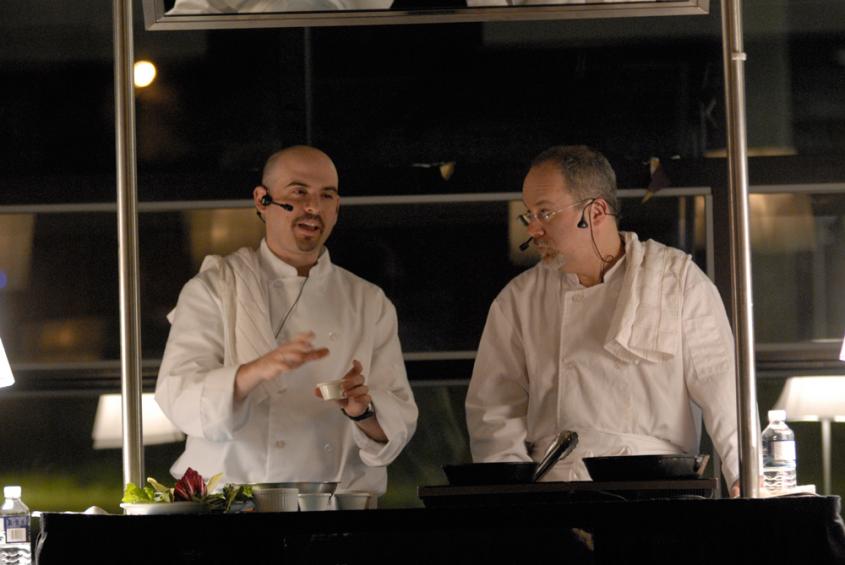A group of researchers from U of T Scarborough’s Culinaria Research Centre recently teamed up with the Smithsonian to talk about the evolution of taste at the American Historical Association (AHA) annual meeting.
The National Museum of American History hosted the AHA’s 132nd annual meeting from Jan. 4 to Jan. 7, which consisted of lectures and panels held by museum curators and historians.
The Curating & Archiving Food History panel was led by U of T Scarborough Professor Daniel Bender, the Canada Research Chair in Cultural History, and covered the evolution of taste across ages and cultures.
In his opening remarks, Bender noted that the AHA’s recent focusing on the history of food and culture marks a significant step forward for the association – which, according to Bender, had never seen a chef’s knife used in a discussion prior to this meeting. “In 132 years finally someone had the idea that, ‘If we’re going to talk about the past, we might as well taste it,’” he said.
Guest speakers included U of T Scarborough professors Jeffrey Pilcher and Rick Halpern, and Irina Mihalache from U of T’s Faculty of Information. Tying together each presentation was the theme of curating and archiving taste, or more specifically, how historians will overcome the difficulty inherent in trying to catalogue antiquated culinary artifacts and sharing them with the public.
“If we open those bottles [of wine from Napa Valley, circa 1970] today the white probably would be undrinkable,” Professor Halpern said. “The red might be palatable but it would be thin.”
Halpern highlighted that indeed taste may be the sense most impaired by the passage of time when examining artifacts. The modern museum -- filled with ancient texts and faded paintings – is a primarily visual experience. How can a curator deliver an experience to a food enthusiast when any historic food item would have long since spoiled, or at the very least have an extremely altered flavour?

Another challenge to overcome was how one could ensure that a similar experience would be gained by observers with different cultural backgrounds. Would a 200-year-old meal described as spicy by northern Europeans of that time be perceived as such by a modern Latin American?
Professor Pilcher, who studied the evolution of beer in particular, pointed out that we as humans may have some ingrained universal understanding of what tastes good, even across diverse cultural backgrounds.
“Each country [on this map] is represented by its iconic beer brands: Budweiser in the states, Molson in Canada, Corona in Mexico, and Tsingtao in China. What’s interesting about this is it shows that every country has its own brew. Even Islamic countries are marked by Beck’s, a non-alcoholic,” he said. “All of these beers are of identical variety. All a pilsner, a lager, very light, clear, fizzy. So it’s interesting that you have this global diversity, and yet standardization at the same time.”
Even with these findings in mind, it’s hard to think of them as anything other than counterintuitive. It wouldn’t take a veteran gastro-neurologist to come up with anecdotal evidence of a group of people from one cultural background having a heightened tolerance for bitter, spicy, or savoury food when compared to another group.
Further complicating the discussion was the notion that taste is often motivated to evolve in spite of – rather than in accordance with – what is commonly thought of as delicious.
WATCH THE TALKS ON CSPAN
Theresa McCulla, of the National Museum of American History, gathered a collection of oral histories from established taste influencers to create what she calls “an archive of taste.”
One such influencer was Fritz Maytag, of Maytag appliances. After being inspired by his father, a purveyor of exotic, stinky cheeses, Maytag would go on to purchase Anchor brewing company. Under Maytag, Anchor began brewing beers using dark malts, rather than producing more of the aforementioned light beers which were popular across the globe. This effectively created not only the first craft beer brewery in America, but a niche market that has been booming ever since.
“[My father] would say… ‘Don’t be afraid to eat things with strong flavors because, come on, we’re in the big world, and don’t have a narrow point of view. Open your mind to things that smell terrible,’” Maytag said. “And he opened my mind.”
